Alpha-1 Adrenoreceptors
Overview
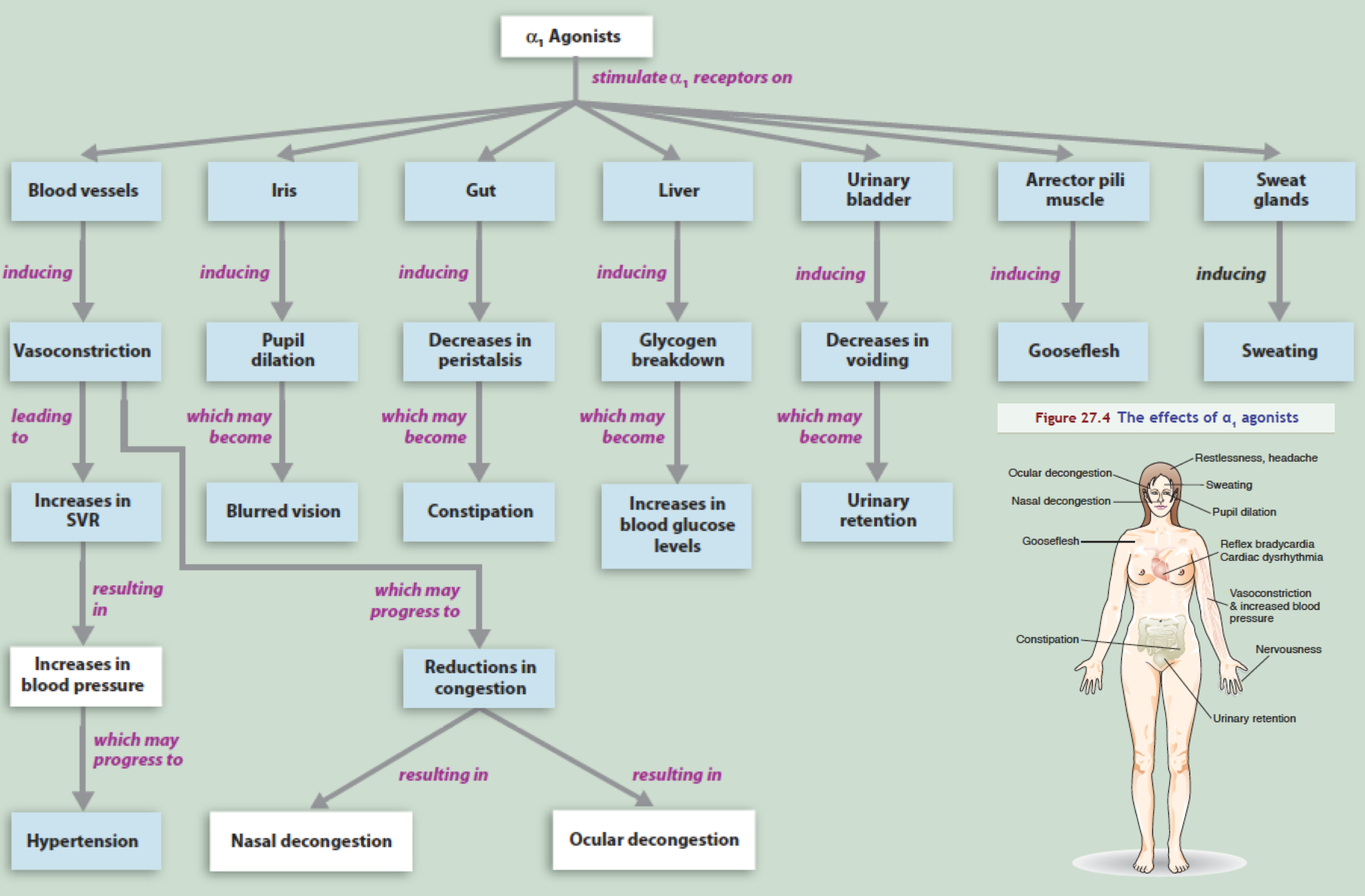
Where are alpha-1 receptors located?
Blood Vessels

- Vasoconstriction: Activation of Alpha-1 receptors in the smooth muscle of blood vessels results in vasoconstriction thereby increasing blood pressure and cardiac output, which is useful in patients with hypotension.
- Hypotension due to shock is treated with phenylephrine, norepinephrine, or epinephrine.
- Midodrine is a prodrug that is enzymatically hydrolyzed to desglymidodrine, a selective alpha-1-receptor agonist used to increase peripheral resistance due to impaired autonomic nervous system function seen in orthostatic hypotension.
- Epistaxis:
- Epinephrine is usually applied topically in nasal packs to reduce regional blood flow .
- Nasal decongestion: decreased blood flow through the nasal mucosa results in reduced mucus membrane congestion.
- phenylephrine or the longer-acting oxymetazoline are often used in over-the-counter nasal decongestant to reduce the discomfort of allergic rhinitis or the common cold
- Increase duration of local anesthesia
- lidocaine with epinephrine is used to reduce diffusion of local anesthetics away from the site of administration
Iris
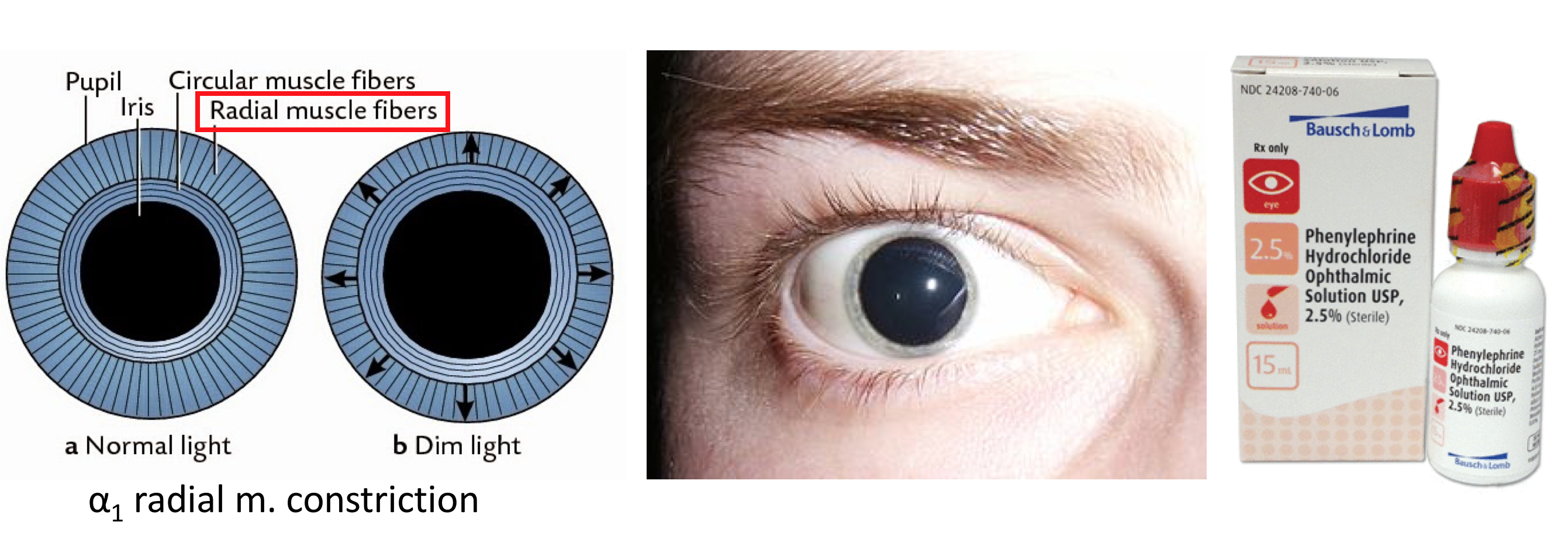
- The iris dilator is composed of radially arranged muscle fibers, which upon alpha-1 activation results in pupillary dilation (mydriasis).
- Mydriatics such as phenylephrine (mydfrin) are used in eye drops to dilate pupils to facilitate examination of the retina.
- Sympathomimetics administered as ophthalmic drops are also useful in localizing the lesion in Horner’s syndrome
Liver
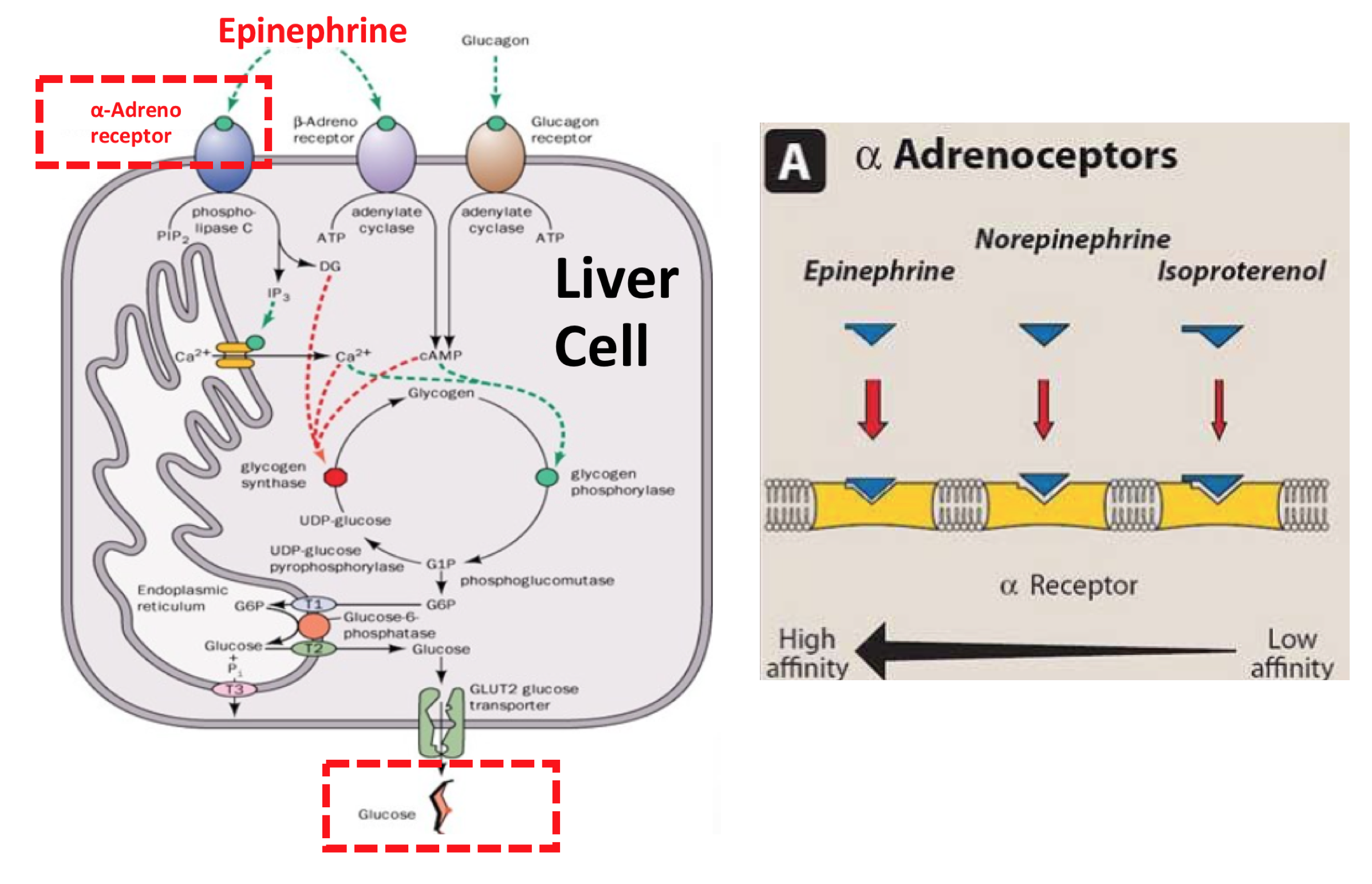
- Stimulates liver to release glucose into blood
- For example, catecholamines such as epinephrine and norepinephrine induce glycogenolysis within the liver.
Digestive Tract
- causes decreased motility by relaxation of gastrointestinal smooth muscle
Genitourinary Organs
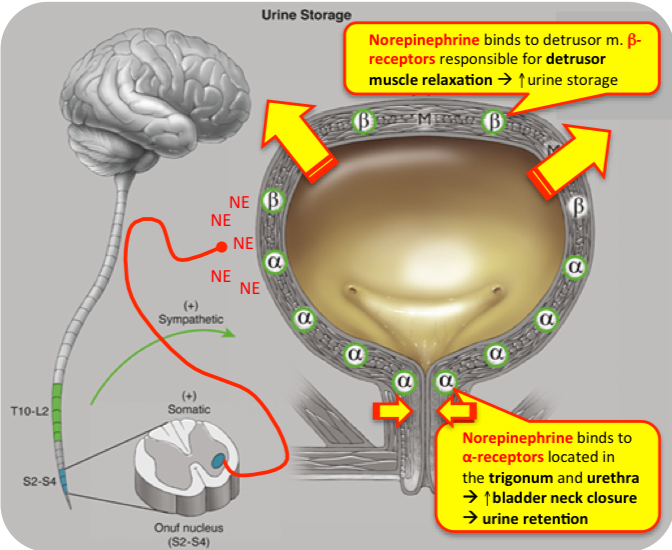
- Urinary Continence: the smooth muscle of the bladder wall base, urethral sphincter, and prostate contain alpha-1A receptors that mediate contraction and therefore promote urinary continence.
- Alpha-1a antagonists are used in the management of symptoms of urinary flow obstruction.
Salivary Gland
- contain adrenoceptors that regulate secretion of amylase and water.
- dry mouth is usually seen as a side effect when centrally acting sympathomimetic drugs, eg, clonidine, produce symptoms of dry mouth
What medications are adrenoreceptor agonists?
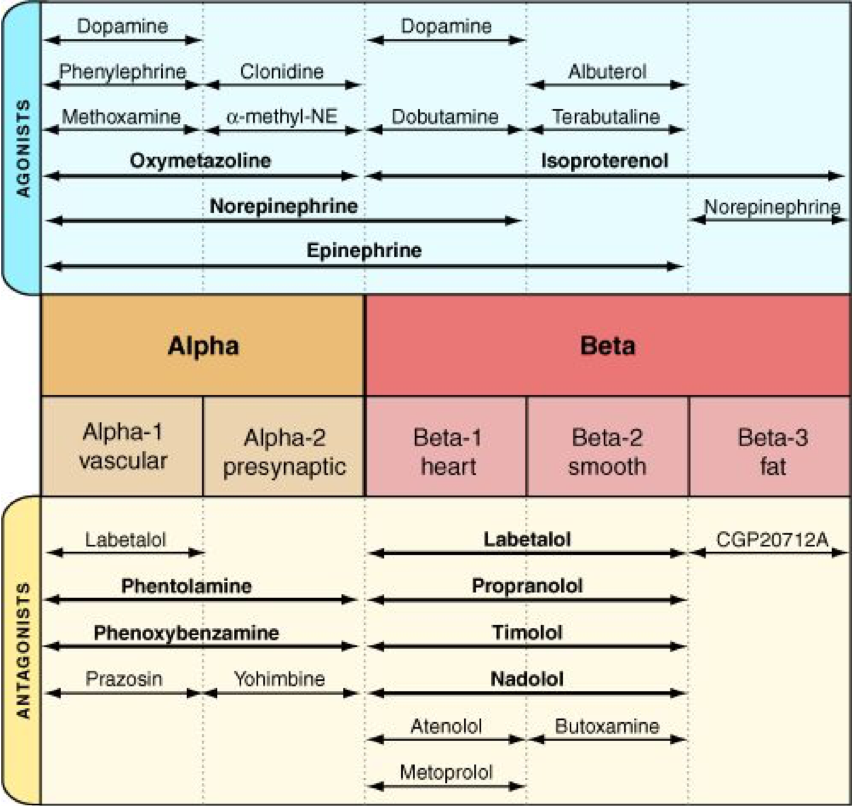
Discussion
What to join the discussion? Sign-up here!
The are currently no comments
